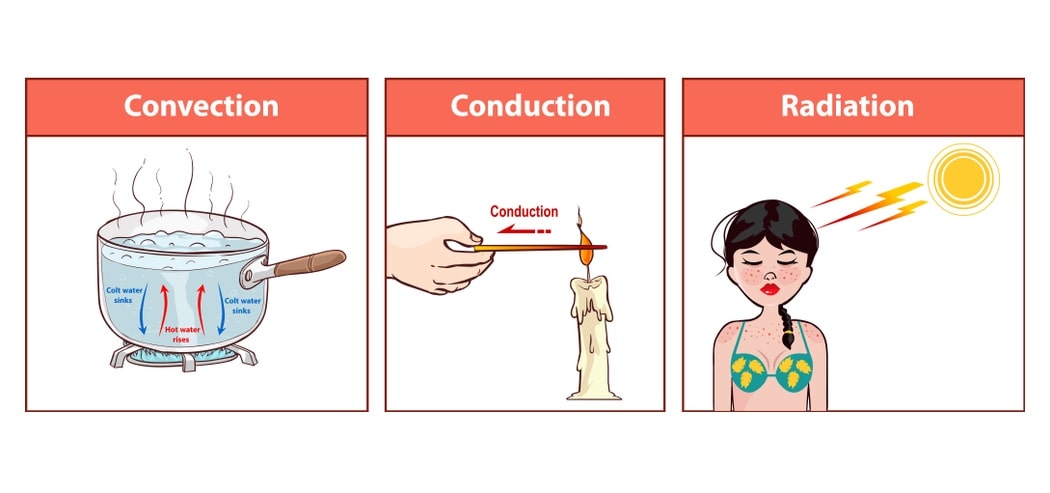Mechanism of Heat flow from a region of high temperature to a region of low temperature. Heat may flow by one or more of the three basic mechanisms.
Conduction
Conduction is a process in which heat flow in a body is achieved by the transfer of the momentum of individual atoms or molecules without mixing. For example, the flow of heat through the metal shell of a boiler takes place by conduction as far as a solid wall or shell is considered. No mixing is involved. Conduction is limited to solids and fluids whose movement is restricted. The flow of heat depends on the transfer of vibrational energy from one molecule to another, and in the case of metals, the movement of free electrons, such that no appreciable displace of matter occurs. Conduction in the bulk of fluids is normally overshadowed by convection, but it assumes great importance at fluid boundaries.
Convection
Convection is a process in which heat flow is achieved by the actual mixing of warmer portions with cooler portions of the same material.
For example, heating of water by a hot surface (coil type water heater) is mainly by convection. Convection is restricted to the flow of heat in fluids (i.c., liquids and gases). Convection currents of air are set up almost daily in the atmosphere. These are responsible for winds, land and sea breezes, ocean currents, etc. Buoyancy forces are induced by variations in the density of the fluid caused by differences in temperature.
Radiation
Radiation is an energy transfer process in which heat flows through space by means of electromagnetic waves.
For example, a black surface absorbs most of the radiation received by it. Simultaneously the absorbed energy is quantitatively transferred into heat. Fused quartz transmits all the radiation that strikes it, while a polished opaque surface or mirror will reflect most of the radiation that strikes it. Solar water heaters, solar cookers, microwave ovens, microwave cookers, sonicator baths, etc., are a few examples in which radiation is utilized for producing heat. Radiation is rare in solids, but examples are found among glasses and plastics.
In general, the mechanism of heat flow from a region of high temperature to a region of low temperature. Heat may flow by one or more of the three basic mechanisms. may operate simultaneously. For example, in ovens, hot air is circulated by a fan, so as to transfer heat by forced convection. Simultaneously, heat is transferred by conduction from the shelf to the material in contact. Heat also radiates from the hot walls of the oven.
Make sure you also check our other amazing Article on : Ball Mill
